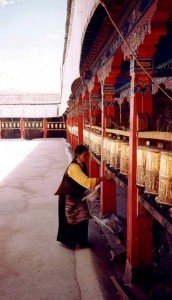I run several groups on LinkedIn, some for my clients, some to support the work I do, and one for my students. After several years of managing these communities and observing others that I belong to, I have some insights. First, it takes effort! A lot of effort. A group is a community that tries to generate a sense of membership by creating topics of conversations, sharing of information and news, and supporting each others professional efforts. A real community requires participation. It requires a nucleus of idea about which people can come together. It needs some passion as well as intellectual involvement. And members need to feel like they belong and have a say in the movement and evolution of their groups. In short, LinkedIn groups are no different from other communities, it’s just that they mainly focus on professional topics. That said, there are a lot of differences from one community to the next, and one LinkedIn group to the next.
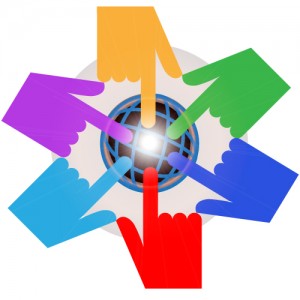 Some communities form to support a real world activity like a conference. One of my groups, ICT & Human Rights, was formed for such a purpose. The original core of the group were people who were attending a conference together and were giving a presentation on Human Rights Panel at IADIS conference. But post conference, the group continued to grow — this is an interesting topic and we all started to share news and other events that we saw relevant to our discussions.
Some communities form to support a real world activity like a conference. One of my groups, ICT & Human Rights, was formed for such a purpose. The original core of the group were people who were attending a conference together and were giving a presentation on Human Rights Panel at IADIS conference. But post conference, the group continued to grow — this is an interesting topic and we all started to share news and other events that we saw relevant to our discussions.
I personally went out of my way to find and invite people who might find our community interesting and useful and who would be able to contribute or benefit from our discussions in some way. But it’s hard work. Most members are lurkers — people who read but do not actively contribute to discussions. Since one of the reasons of ICT & Human Rights group’s existence is to disseminate information, this doesn’t bother me. For many members, English is not their primary language and contributions are difficult. But until more members actively post new discussions, I see it as my responsibility to share news — not too much, but just enough to keep the idea of the group alive in the members’ consciousness.
The necessity of keeping the group active by posting new content feels like spinning the prayer wheels. If a bit too poetic, the metaphor or the visual of continuously spinning wheels feels just right to me. I want to keep the group going until it catches on, until other members become so involved that they start to spin the wheels as well, until the community jells together past the initial pull of using information communication technologies to support human rights and moves into more active state of doing so…

Not all groups feel this way. Interfaces.com group is really just a repository of interesting articles that have something to do with product design. It’s a collection of links that my students can use to learn something new in their spare time and to do the class assignments. Here’s a link to the Contributors to Interfaces.com blog to some of their work. Ones in a while, we do have short discussions, this is not the purpose of this LinkedIn group. Although, if you are a member of this group, you have shared an experience of taking one of my classes and it’s a form of a bond that can serve as a foundation to a professional connection…
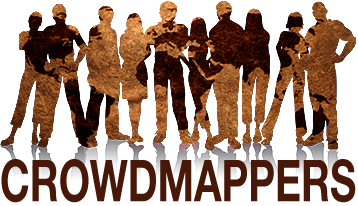
Some groups are born to support a conference, some to support a class, some to support ideas. CrowdMappers group was born to help Ushahidi users find each other and get help and support from joint experiences of using geographically-based crowd-generated data.
When my kids started work on their Cost of Chicken project, they used the Ushahidi platform to collects the data on the true costs of food around the world. But there were lot of problems, both technical and social. I hoped that by creating a place on LinkedIn where people can discuss how to use crowdmaps, I could help a lot of people who were in the same position as my sons. We are not there yet, but I hope the group will take off eventually. Until then, I keep spinning the prayer wheels for the geo-crowd-data-mapping!
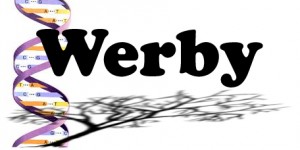 There are two groups that I’ve started out just to see what would happen: Werby Group and Mirkin Group. These are groups that were formed around the last name, rather than around an idea. The membership requirement is that either the person or their direct relative has one of those last names. Only Werbys could belong to the Werby Group and only Mirkins could belong to the Mirkin Group. Interestingly enough, that while I didn’t really think there would be a genetic link between the members of these groups, there seems to be one at least for the Mirkin Group.
There are two groups that I’ve started out just to see what would happen: Werby Group and Mirkin Group. These are groups that were formed around the last name, rather than around an idea. The membership requirement is that either the person or their direct relative has one of those last names. Only Werbys could belong to the Werby Group and only Mirkins could belong to the Mirkin Group. Interestingly enough, that while I didn’t really think there would be a genetic link between the members of these groups, there seems to be one at least for the Mirkin Group.  But since these groups are not based on real-world friendships, or professional affiliations, or linked in some other concrete way, there is very little chatter. So I keep a little wheel spinning there as well. Some day, some Mirkin or some Werby might find these connections helpful in some way. At least I hope so. Personally, I’ve been getting to know some of these Werbys and Mirkins outside of the groups, and it’s been quite fun and interesting.
But since these groups are not based on real-world friendships, or professional affiliations, or linked in some other concrete way, there is very little chatter. So I keep a little wheel spinning there as well. Some day, some Mirkin or some Werby might find these connections helpful in some way. At least I hope so. Personally, I’ve been getting to know some of these Werbys and Mirkins outside of the groups, and it’s been quite fun and interesting.
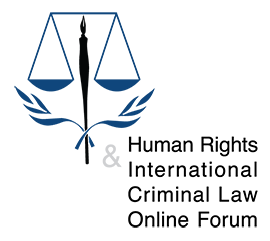 Of all the groups I’ve started, International Criminal Law group has grown the most, with well over 2,000 members. Originally, the group’s purpose was to support the Human Rights and International Criminal Law Online Forum. This is an amazing project — a partnership between UCLA School of Law and the International Criminal Court Office of the Prosecutor. The Forum discusses difficult questions faced by the ICC, and the LinkedIn group was there to help promote and support these discussions. But like every other community, the International Criminal Law group have moved way beyond that. And I’ve had a privileged vantage point to watch this community evolve and grow.
Of all the groups I’ve started, International Criminal Law group has grown the most, with well over 2,000 members. Originally, the group’s purpose was to support the Human Rights and International Criminal Law Online Forum. This is an amazing project — a partnership between UCLA School of Law and the International Criminal Court Office of the Prosecutor. The Forum discusses difficult questions faced by the ICC, and the LinkedIn group was there to help promote and support these discussions. But like every other community, the International Criminal Law group have moved way beyond that. And I’ve had a privileged vantage point to watch this community evolve and grow.
If I had to make a guess as to the size of the community necessary to support self-sustaining discussions (without me spinning prayer wheels), it would be around 500 members. At this size, there are enough individuals that take ownership of the group and post and discuss issues that they find compelling. This is still a very small number, 5 or so active members — that’s 1:100 ratio of active members to lurkers — but it’s enough to move the community into a vibrant and useful stage of its development. I hope some of my other LinkedIn groups grow enough to be self-sustaining as well.
I have a lot of ideas of why groups fail — fail to be interesting, fail to be self-sustaining, fail to support their members. I see a lot of failure to thrive as a community coming from the way the groups are ran. Like living organisms, groups can’t be caged and forced to evolve as the owner of the group wants them to. The owner of the group can remove obsticles to failure such as spam and abusive behavior, but the owner can’t force the evolution of the group (only a bit of gentle shaping can be done). When I get “this is not what this group formed to discuss”, I immediately want to leave the group. Just like the host can’t dictate the conversation choice at a large cocktail party, the group manager/owner can’t really force people to stick to pre-determined topics. And the owner can try to make people welcome — welcome to contribute, welcome to share ideas and articles, welcome to ask questions, welcome to build relationships with other members of the group.
Groups evolve and tackle problems that didn’t exist when they formed. New software and hardware open possibilities for new ICT uses in human rights, new advances in medicine become new topics of discussion for CrowdMappers, etc. An alumni group can form and reform around topics that have little to do with their time at school (or a tenure at previous job). Group dynamics are fluid, and it is the job of the group managers/owners to support them and let them grow in the new and interesting to its members ways. …and to spin those prayer wheels…

